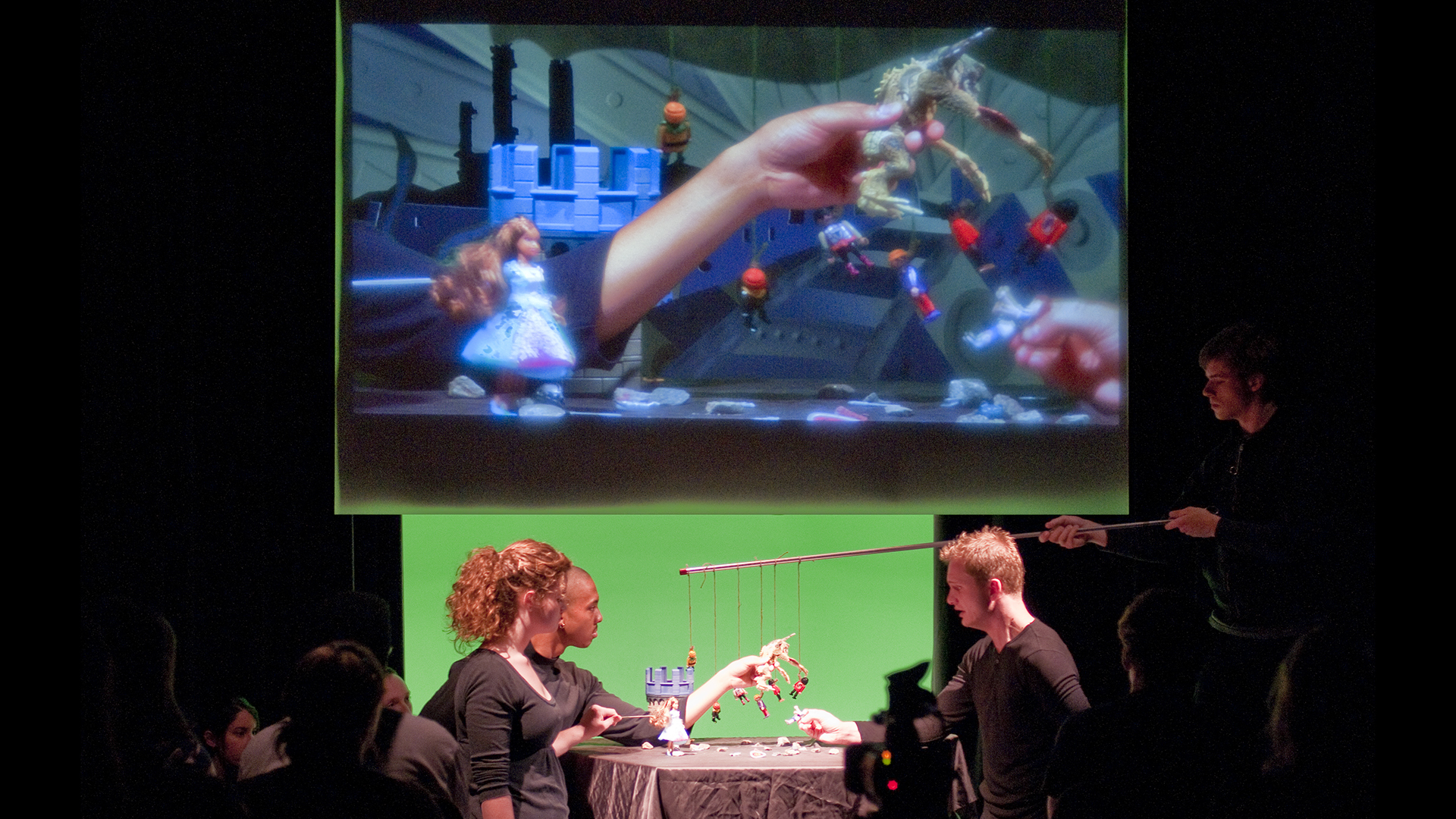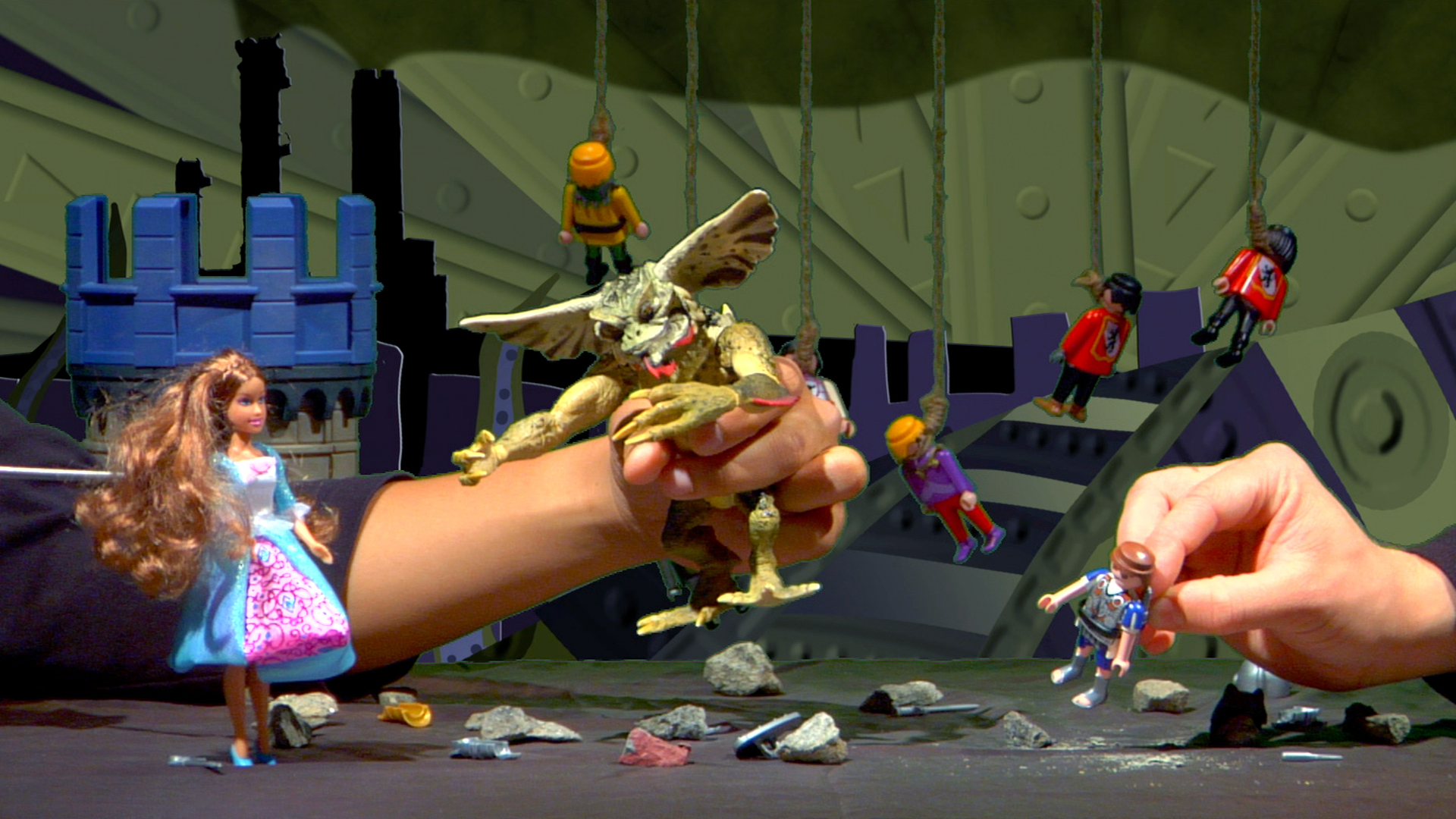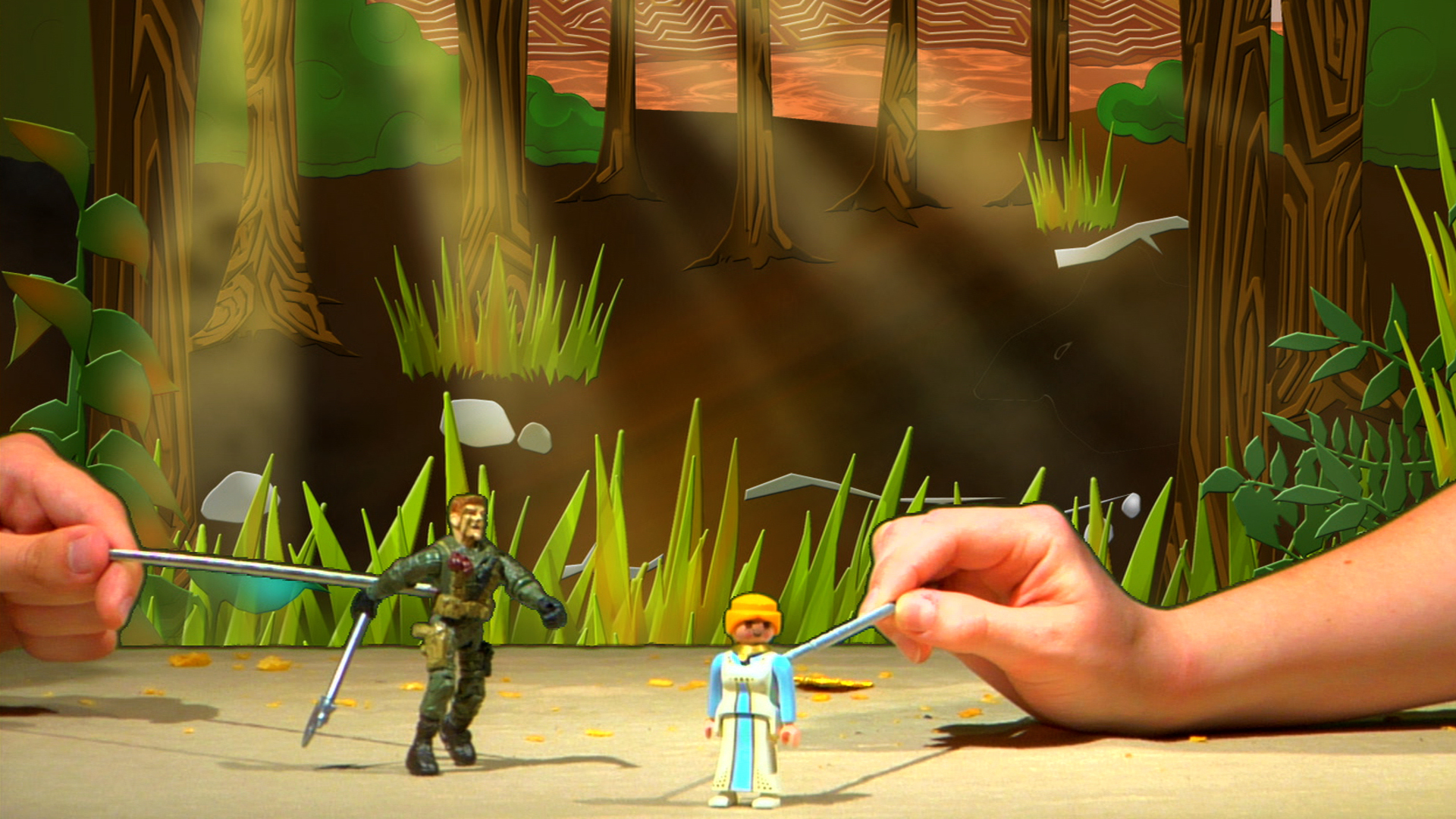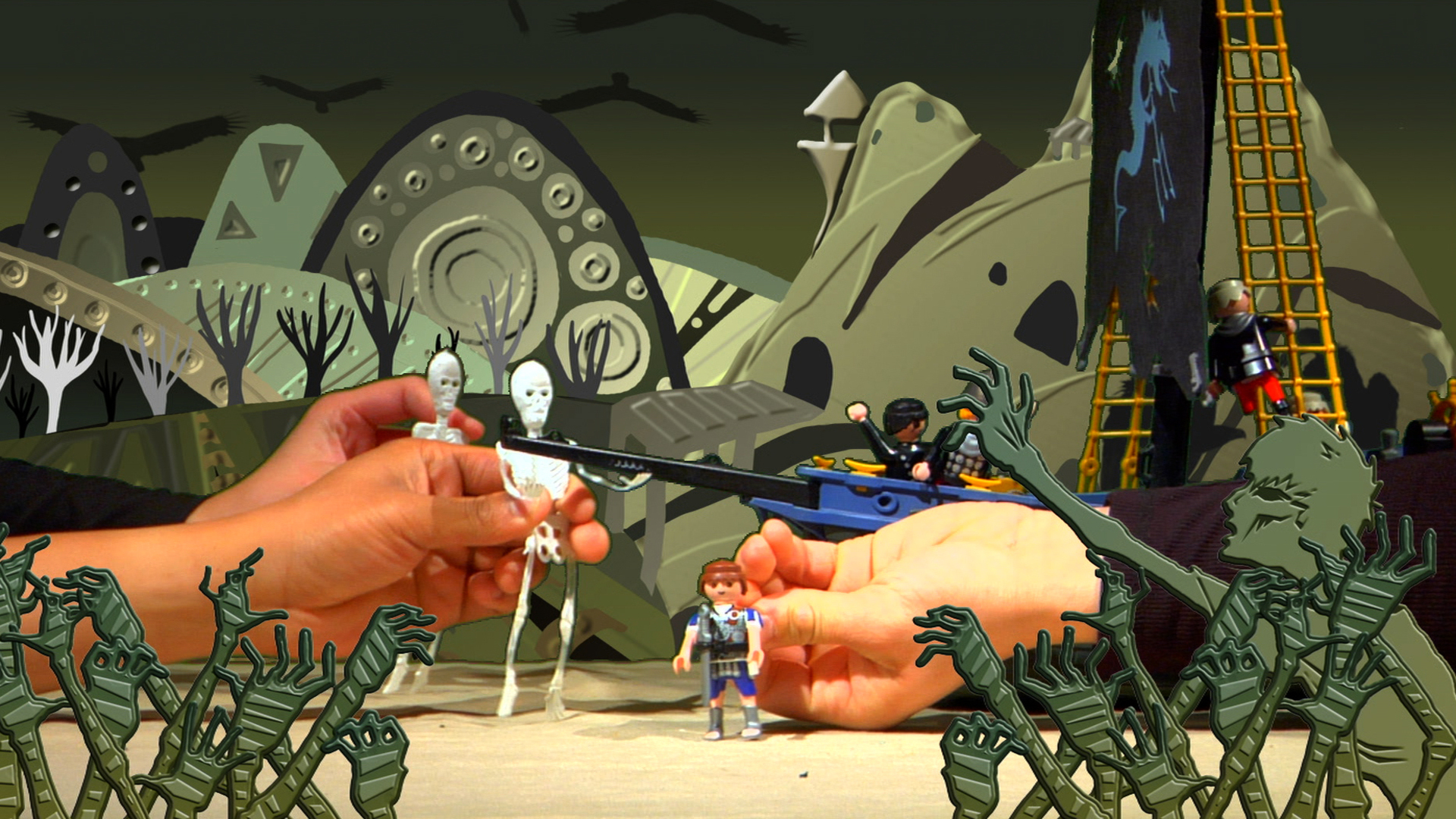
Playing Pericles: Shakespeare for Social Change, was a collaborative effort in experimental theater between the departments of Theater, English, and the IRC in the Spring of 2010. As its grounding premise, the project explored notions of play and the role of imagination in guiding all production decisions. The undergraduate actors performed all roles using a variety of children’s toys, kneeling around a short table in front of a small audience. IRC Technical Director Eric Smallwood was the Creative Director of the project and was charged with both designing and producing the visuals, as well as overseeing the high-tech process of chroma-keying live action with animation throughout the entire performance. The performances were filmed against a green screen and composited in real-time against these animated backdrops, which were projected onto a screen hanging above the actors. For the resulting performances, the IRC’s production studio was converted into a black box-style technical theater. The performance ran for 3 days in May 2010.
As its grounding premise, the project explored notions of play and the role of imagination in guiding all production decisions. To this end, the full technical capabilities of the IRC were utilized in pioneering a unique method of dramatic staging, combining real-time chroma-keying, video switching, and projection to produce a multifaceted experience. Working closely with undergraduates in visual arts, the team produced animated backdrops for overlays for almost every scene in the play. The actors performed their roles using a variety of children’s toys, kneeling around a short table in front of a small audience. All action performed during this stage was captured against a green screen using a camera nested among audience members. The feed was captured and then processed by a video switcher, which composited the signal against animated backdrops and sent the final video signal back into the performance space to be projected onto a screen hanging above the actors. The switcher also provided real-time transitions between the animated backdrops and allowed the stage manager to accentuate the action on stage by fading the screen above to black. Audience members were thus allowed to choose where to focus their attention, with the screen above acting as a window into the imagined space of the actors “playing.”
The animated backdrops/environments were designed to mimic the dynamism and emotion involved in methods of play. Heavily saturated palettes were used to contrast the backdrops against physical elements on the hand stage, engulfing the drama visually and conceptually in a vibrant field of imagined color floating just above the actor’s heads on a large projection screen. The compressed quasi-collage style of the drawings themselves was intended to convey a sense of a world imagined but not completely thought out, reinforcing the role spontaneity plays in creating a dramatic experience.
A Kaufman Entrepreneurship Innovation Grant funded Playing Pericles, and part of the initiative required that a DVD documenting the performance be authored. As was the case with staging and technical considerations, the play posed several unique challenges in capturing the spirit and ambiance of the production. Balancing the elements of both live drama and cinematic techniques, the performance created multiple axes upon which to view the play. Capturing this multidimensional nature provided a unique editorial challenge during post-production. IRC graduate research assistant and IMDA MFA 2013 candidate Gianfranco Mirrizzi worked closely with Lee Boot, Alan Krizenbeck, and Michelle Osherow to pull elements from all 3 performances. Juxtaposing close-ups of different actors over the composited backdrops allows viewers to more intimately connect each individual with the toy they embodied. The resulting DVD offers a hybrid of narrative and performance documentation, which, instead of merely being an echo of a live performance, actually interprets the play into an entirely new context and experience. The success of Playing Pericles champions the collaborative spirit of media and arts-based research in the IRC.




Researchers and Creators
Producers: Alan Kreizenbeck, Michele Osherow, Eric Smallwood
Director: Alan Kreizenbeck
Creative Director, Projection Designer & Lead Animator: Eric Smallwood
Background Artist/Animator: Rose Barry, Casey Boehm, Rachel Kreutzinger
Imaging Research Center, UMBC © 2024